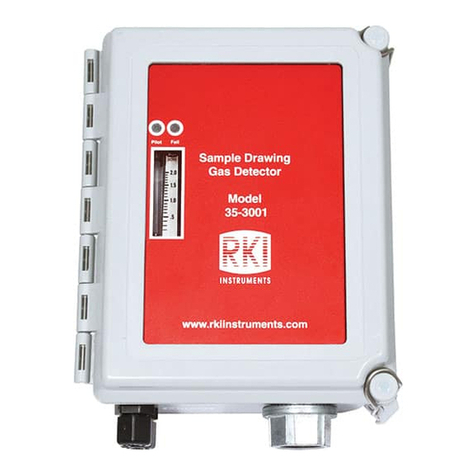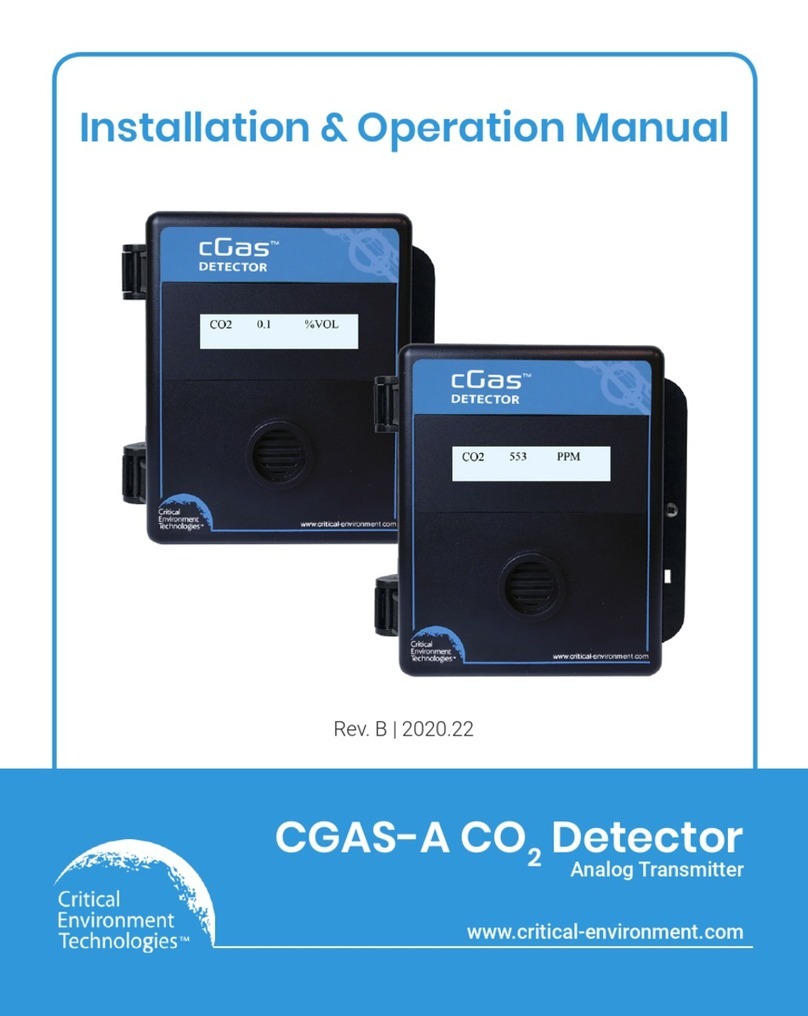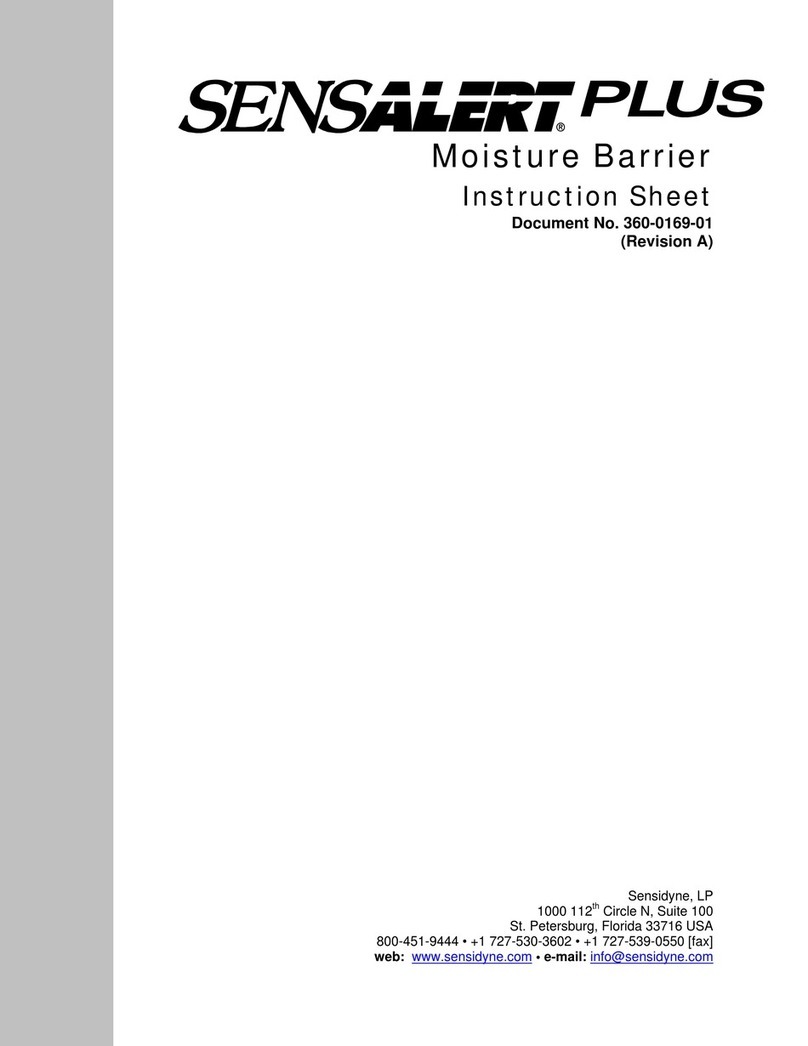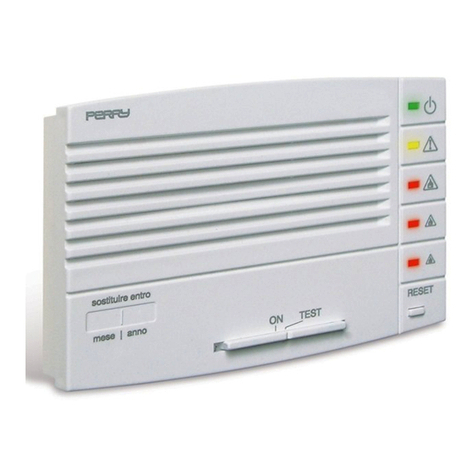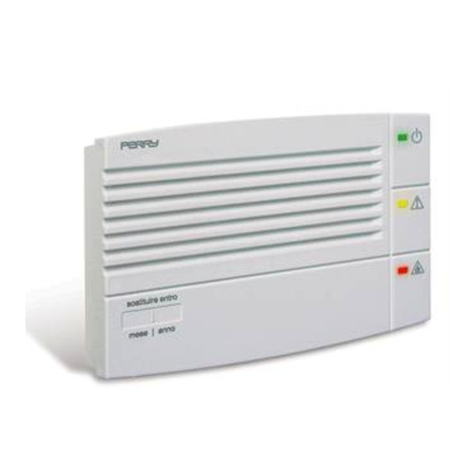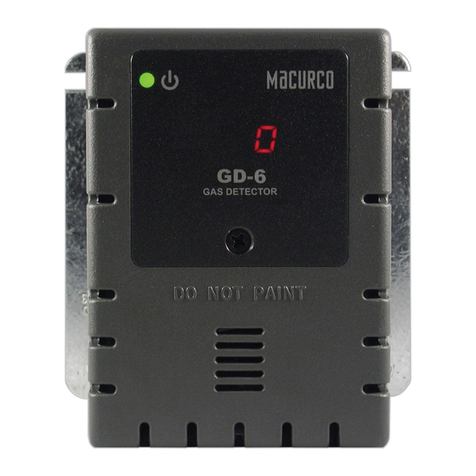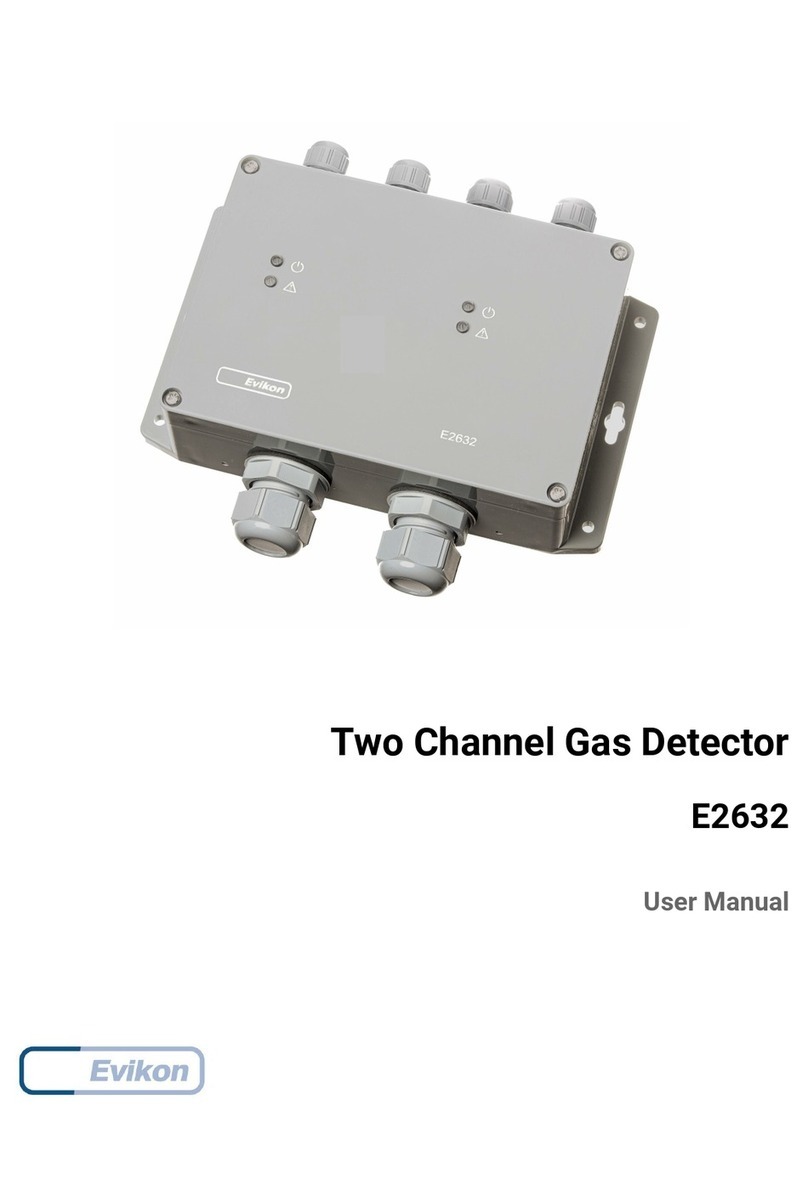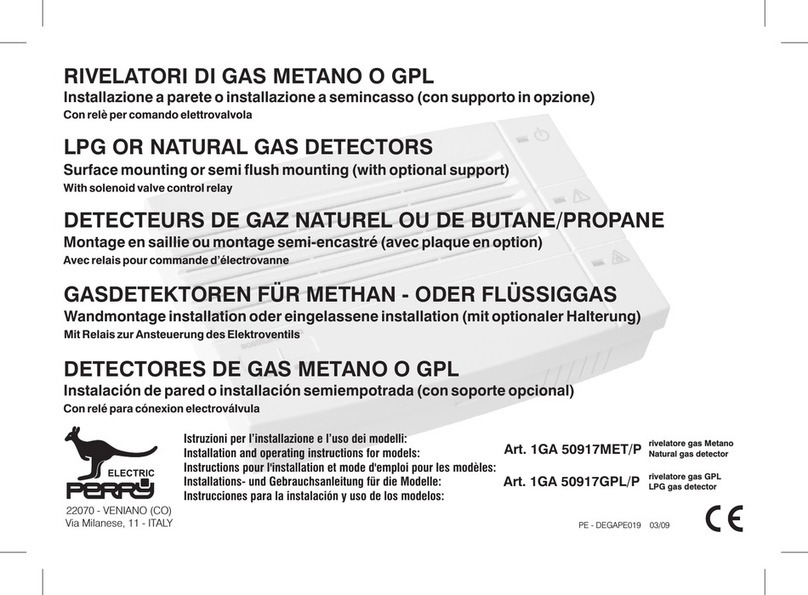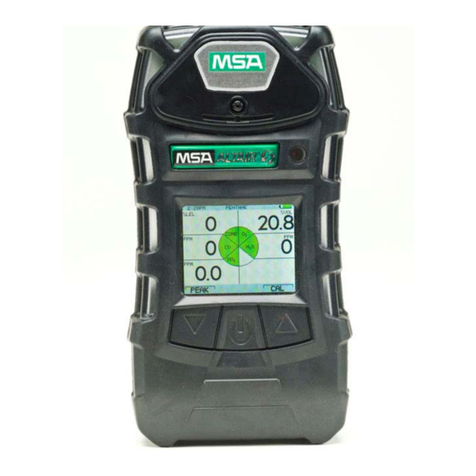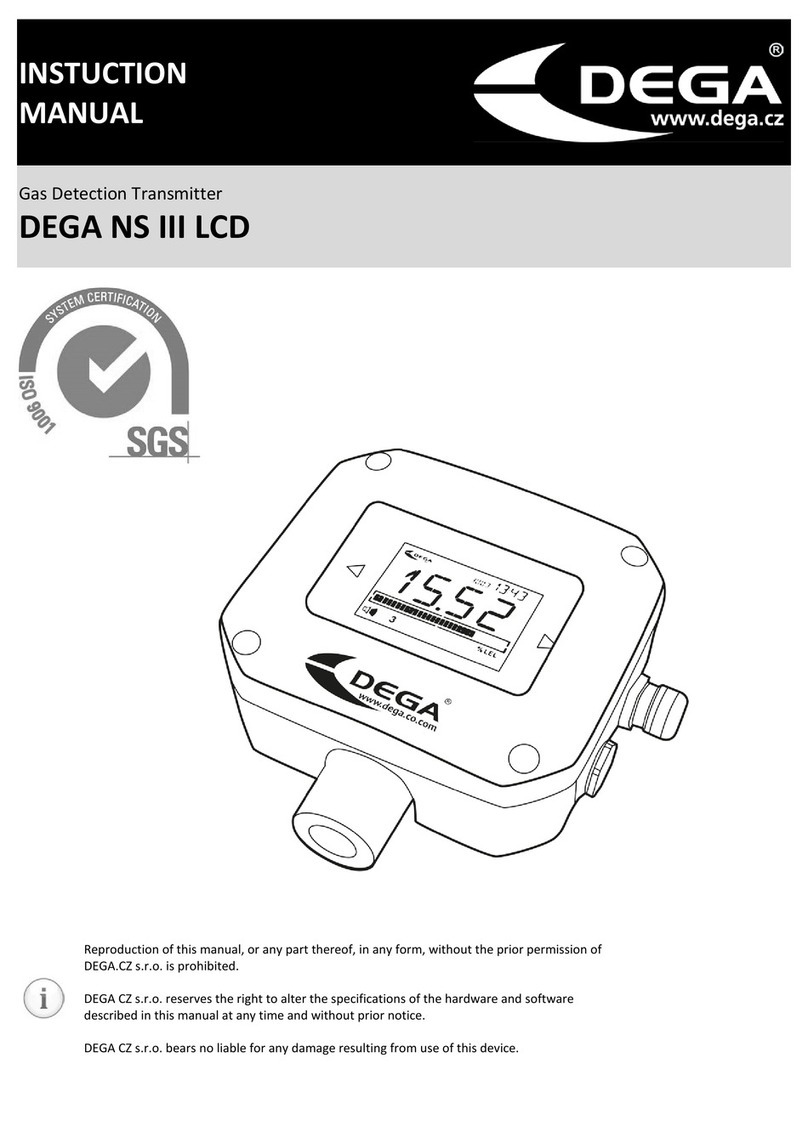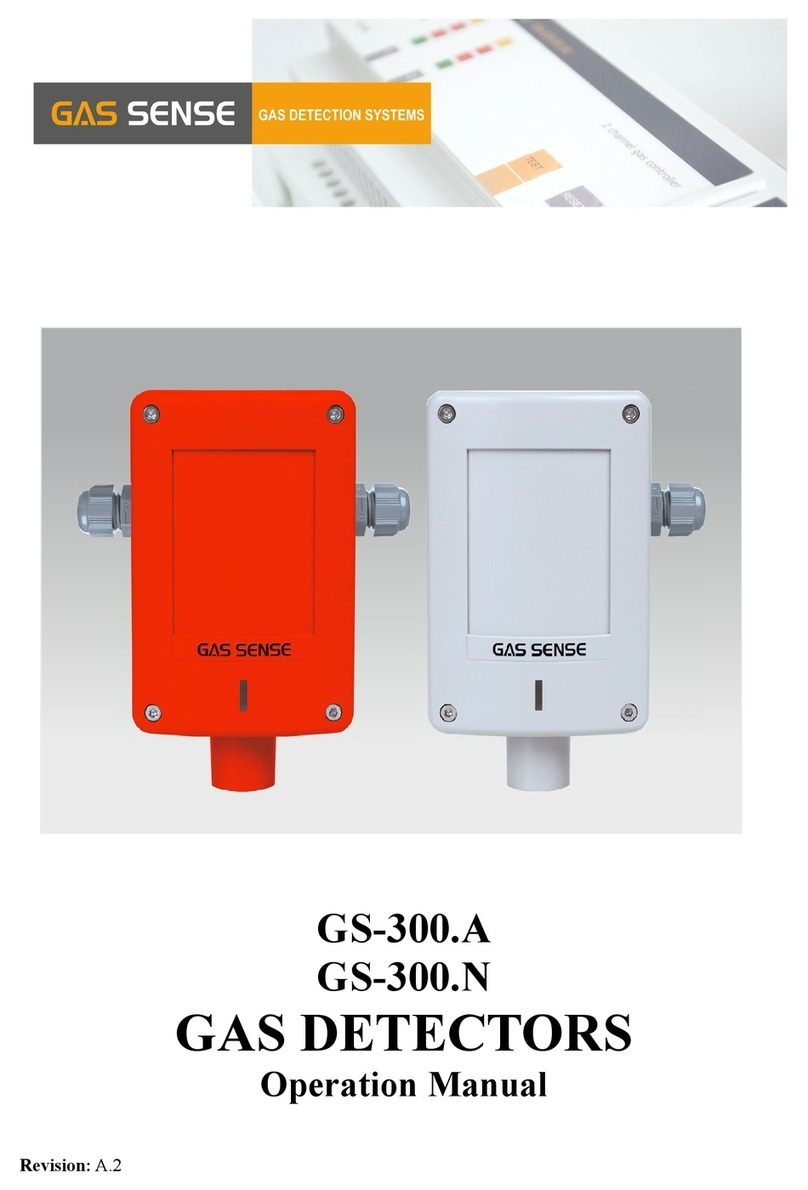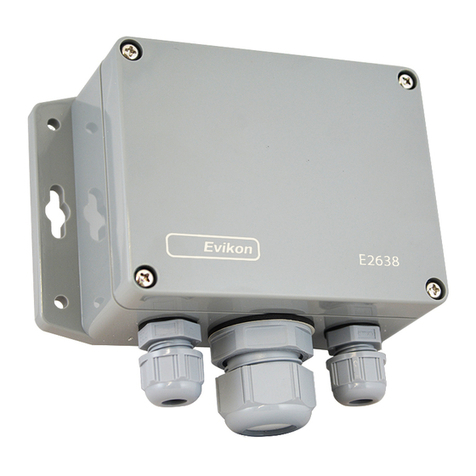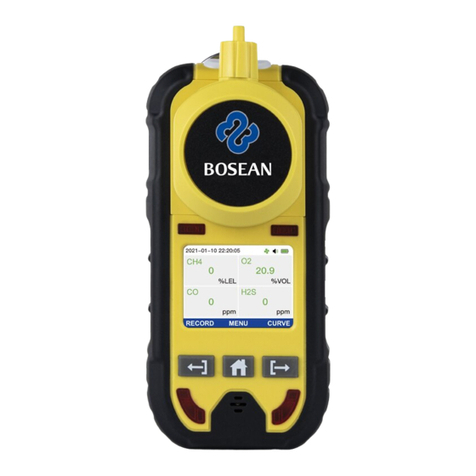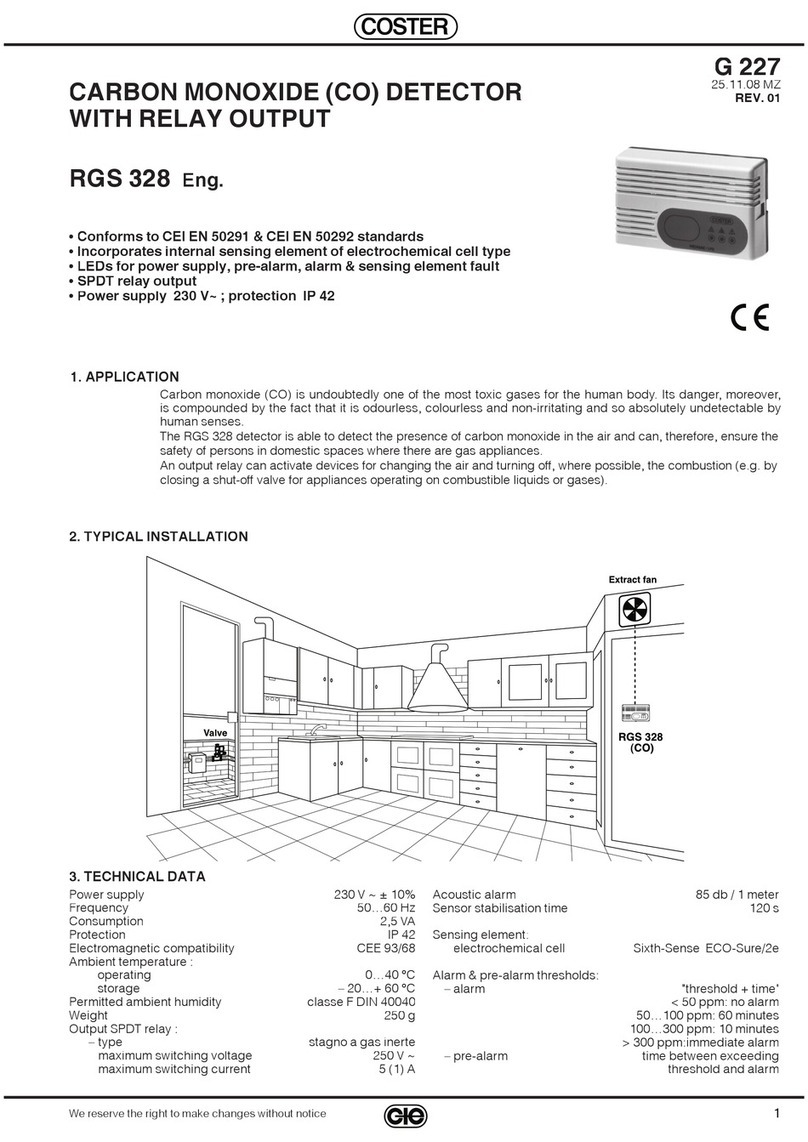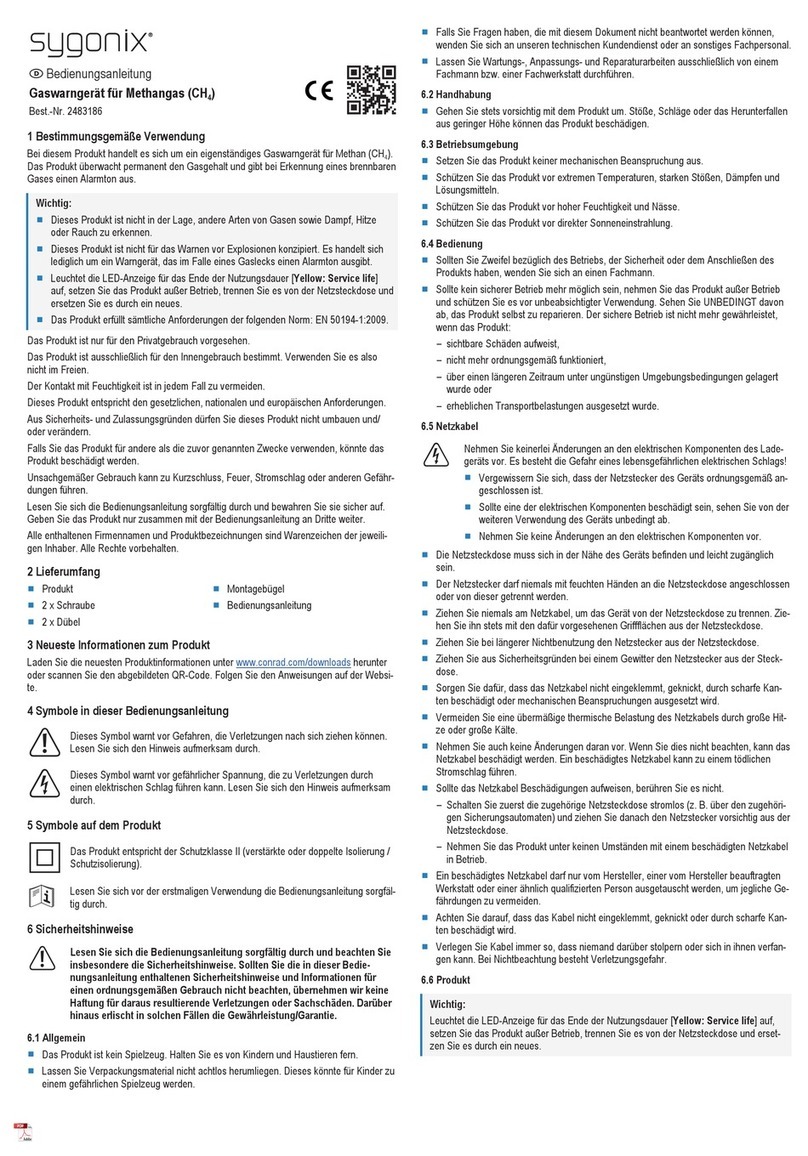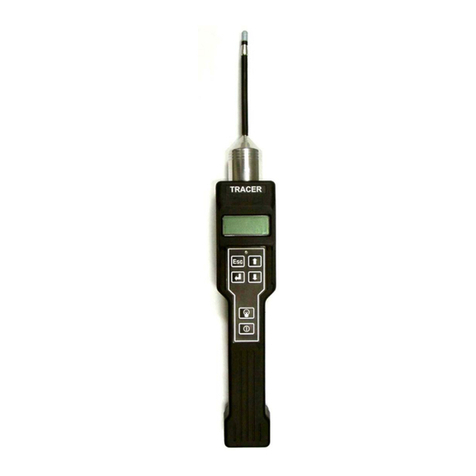
I
1.u - ACCENSIONE E NORMALE FUNZIONAMENTO
All’accensione o dopo una caduta di rete l’apparecchio rimane per minuto
(non rileva gas), necessario per il riscaldamento della sonda (fig. 2), quindi
l’apparecchio passa allo stato operativo (fig. 3).
1 in uno stato
non operativo
"normale funzionamento"
ISTRUZIONI D’USO PER L’UTENTE Attenzione: esiste la possibilità che nell'ambiente si
avverta odore di gas prima che l'apparecchio dia l'allarme.
5
LED verde - acceso
LED giallo - acceso
LED rosso - spento
Buzzer - spento
Relè - disattivato
(Elettrovalvola aperta)
Fig. 2 - Stato operativo “funzio-
namento non operativo”
LED verde - acceso
LED giallo - spento
LED rosso - spento
Buzzer - spento
Relè - disattivato
(Elettrovalvola aperta)
!
Fig. 3 - Stato operativo “normale
funzionamento ”
!
2.u - SEGNALAZIONE PRESENZA DI GAS E ALLARME GAS
Se la concentrazione di gas nell’ambiente supera il valore limite d’intervento,
l’apparecchio segnala tale situazione accendendo il LED rosso di allarme e
contemporaneamente il buzzer emette un suono intermittente (fig. 4).
Se la situazione di allarme presenza gas permane per un tempo superiore a 15 secondi,
il relè dell’apparecchio si attiva comandando la chiusura della eventuale elettrovalvola
collegata (fig. 5).
LED verde - acceso
LED giallo - spento
LED rosso - acceso
Buzzer - 1 segnale al sec.
Relè - disattivato
(Elettrovalvola aperta)
Fig. 4 - Stato di “allarme presenza
gas”
!
LED verde - acceso
LED giallo - spento
LED rosso - acceso
Buzzer - 1 segnale al sec.
Relè - attivato
(Elettrovalvola chiusa)
Fig. 5 - Stato di “allarme presenza
gas e attivazione del relè”
!
1s 1s
Quando la concentrazione di gas nell’ambiente si riduce a valori inferiori al valore
limite d’intervento, l’apparecchio ritorna allo stato operativo "normale
funzionamento" e tutte le segnalazioni di allarme cessano, il relè si disattiva (fig. 3).
3.u SEGNALAZIONE GUASTI-
Il giallo acceso fisso contem-
poraneamente all’emissione di brevi
segnali acustici , indicano
sempre uno stato di guasto o
malfunzionamento dell’apparecchio,
rilevato dal suo sistema di
autodiagnosi (fig. 6).
LED
del buzzer LED verde - acceso
LED giallo - acceso
LED rosso - spento
Buzzer -
!
Fig. 6 - Segnalazione guasti e
malfunzionamenti
ATTENZIONE!: in caso di segnalazione di stato di “guasto o
malfunzionamento” chiamare l’installatore.
Relè - disattivato
(Elettrovalvola aperta)
ATTENZIONE! IN CASO DI ALLARME
• ESTINGUERE TUTTE LE FIAMME LIBERE, INCLUSI I MATERIALI
FUMANTI.
• SPEGNERE TUTTI GLI APPARECCHI A GAS.
• CHIUDERE IL RUBINETTO DEL CONTATORE DEL GAS O DELLA
BOMBOLA GPL.
• NON ACCENDERE O SPEGNERE LUCI; NON AZIONARE APPARECCHI
O DISPOSITIVI ALIMENTATI ELETTRICAMENTE.
• NON USARE IL TELEFONO NELL'EDIFICIO CON SOSPETTA PRESENZA
DI GAS.
• APRIRE PORTE E FINESTRE PER AUMENTARE LA VENTILAZIONE
DELL’AMBIENTE.
Se l’allarme cessa è necessario individuare la causa che l’ha provocato e
provvedere di conseguenza.
Se l’allarme continua e la causa di presenza di gas non è individuabile o
eliminabile, abbandonare l’immobile e, dall’esterno, avvisare il servizio di
emergenza.
1s 1s
Brevi segnali
acustici
